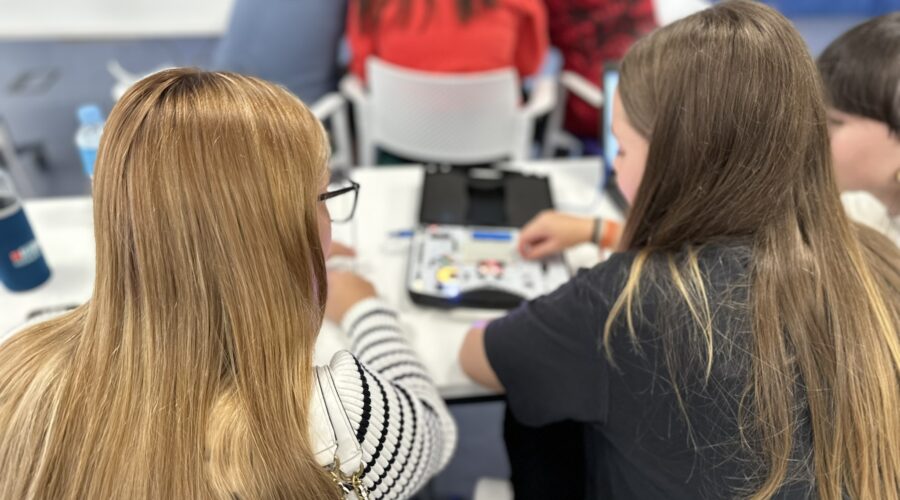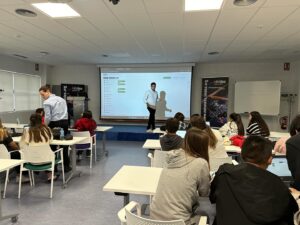IMDEA Networks

4th grade students visit IMDEA Networks for Researchers at Schools activity
They have learned how to use an Arduino kit, as well as visited the institute's state-of-the-art laboratories
17 May 2024

Around 60 students from Colegio Amanecer (Alcorcón, Madrid) participated in the “Researchers at Schools” activity, organized by IMDEA Networks on May 17th (Internet and Telecommunications Day) as part of the Madrid 2024 European Researchers’ Night project.
The event started with a welcome to the students to the institute and an introduction to Electrolab (the first educational electronic prototyping case to teach, create, and program) by our Communication Manager Marta Dorado. Then our technical support colleagues Raúl Hernández and Bryan Peña have been in charge of explaining the guided practice prepared. With this Arduino kit and through the Hello Blocks application, they have designed a sound traffic light to help visually impaired people to cross the streets with autonomy and safety.
 Afterwards, they had fun with the virtual escape room (created by IMDEA Networks with other partners such as COIT, UPM, etc., within the framework of the PROMIN-Teleco Renta project). The objective was to teach them key concepts about these studies in a dynamic and entertaining way.
Afterwards, they had fun with the virtual escape room (created by IMDEA Networks with other partners such as COIT, UPM, etc., within the framework of the PROMIN-Teleco Renta project). The objective was to teach them key concepts about these studies in a dynamic and entertaining way.
They were also introduced to 5TONIC by Neftalí González, System Administrator at IMDEA Networks. The lab was founded by IMDEA Networks and Telefónica to provide an open global environment where members of industry and academia work together on specific innovation and research projects related to 5G and 6G technologies.
Then they went to the LiFi lab, where our PhD students Javier Talavante and Dayrene Frómeta explained in a very informative way what they do in their research group. They have told them what LiFi technology is and the difference between wireless communication made by radio frequency waves and LiFi, made through visible light. They also told how they have created prototypes of battery-less IoT devices that communicate only through light. A solar cell in these devices acts as both a power source and a receiver.
Finally, they visited the millimeter wave lab, where our research engineer Anthony Sánchez told them what they are working on in his group. They cover different aspects of communications operating at very high millimeter frequencies, precisely to reduce latency and enable connectivity of IoT devices, autonomous vehicles, and high-definition video transmission applications.


Recent Comments